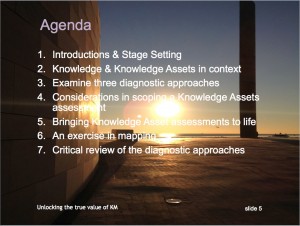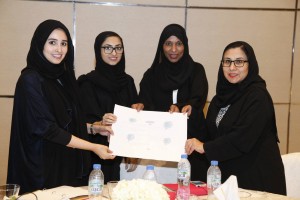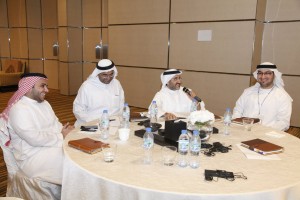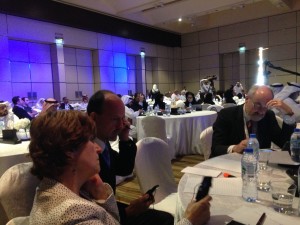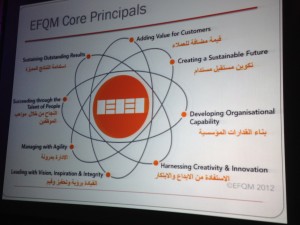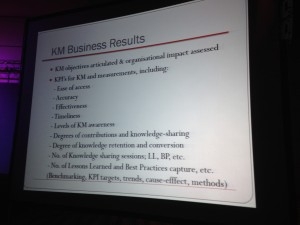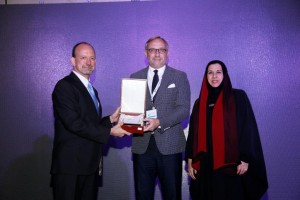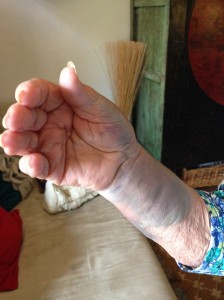On March 2nd I was in Broadgate talking to the Chairman and two Managing Partners of a law firm. There, at the invitation of the Chief Operating Officer, we were discussing inter alia how to deepen relationships so that when the senior relationship manager departs, their knowledge, networks and clients don’t depart with them.
‘Why would I change, there’s nothing in it for me’
Against a backdrop of increased M&A activity and potential ‘Lift Outs’ (hiring of teams from another firm) we talked about why millionaires would share what they know for the benefit of the rest of the firm. I recalled an incident from a previous client, a federation of 13 businesses with very wealthy MD’s who had no intention of passing on what they knew about clients or cross selling for the good of the whole firm. This is what one MD said:
I wouldn’t let …. anywhere near my client; for a start my business is unique and I don’t want them ruining a relationship which has been built up over many years. Ours is a relationship business and I have an assistant who knows everything about the client and we store all information on the …. system.
And this from a senior banker:
I have a flat in London and a house in Umbria. I drive an Aston and the school fees are all paid. Why would I want to change?
These are not untypical responses from the upper echelons of organisations.
‘I have no assets so I go where the excitement is’
Contrast that with these factional ‘Generation Rent’ (People born in the 1980s who have no hope of getting on the property ladder, a term coined by The Independent’s Tim Walker) examples arising our of conversations I had a few days ago.
‘Sam‘ is 30. He left college and became a talented electrical engineer. As part of the BT’s acquistion of EE he now finds himself in demand. His prospective boss (a newly promoted middle manager) sends him an email in which he tells him how lucky Sam will be to work on his new team – I kid you not! So Sam retorts, ‘actually I am not going to work for you or on your team…’
Sam lives with his girlfriend, they are able to afford to rent but have little immediate prospect of owning a home. She is training to become a teacher. Their horizons are near term and they want to work for people who share their values where they can move on when the role (or people they work with) becomes uninteresting.
Sam’s father Matt who is in his late 40’s had a mortgage at 21 fuelled by the belief that home ownership was the ultimate benchmark of a civilised society. Sam doesn’t feel the same, for him experience is more important.
‘Micha‘ is 23 and has been in work for 2 years since graduating from Univeristy of Southampton. She doesn’t know if she can afford to leave her parents to move in with her boyfriend. Her world is governed by whether she can service her credit card and overdraft and of getting away from a 45 year old middle manager who has read the corporate values manual but disregarded it from day one in his pursuit of a plethora of consumer durables. He speaks the talk but doesn’t walk it.
Generation Rent employees have a very different set of values and aspirations from their colleagues. Unable (or unwilling) to join the property owning fraternity they are more transient than their predecessers and do not have the same sense of attachment. They will go where the action is unencumbered by physical assets.
They come to firms with a developed sense of online community but are less adroit at human interactions. Engaging with these organisational foot soldiers is going to be one of the biggest challenges facing senior management over the next few years as they try to make organisations leaner and more productive. And no longer I fear can Senior Managers subcontract the task to HR, Learning, Training or indeed Knowledge Management or rely on the cascading methods of communication that have been prevelant in most organisations seeking to get changes made and messages understood.
crossing a broad chasm
The proportion of people classed as Generation Rent is predicted to expand as UK home ownership becomes a distant horizon. This gap isn’t going to close quickly so organisations are relying on squeezed middle management to be the water carriers between the top and the bottom. For the first time ever we have 4 generations of workers all working at the same time!
In the current edition of ‘The World Today’ Chatham House’s bimonthly magazine there is piece on a recent members event during which Kevin Sutcliffe, Head of News Programming EU, Vice News had this to say:
There is a notion that television news and documentaries attract an older audience. The logic in editorial meetings at Channel 4 News and the BBC is that people aged 18-35 aren’t interested in the world. VICE started to put out documentaries about the coup in Mali or the way Egypt and the Arab Spring was unfolding. They were very popular. They had engagement times of about 25 mnutes and they were getting hundreds of thousands of views. So there is great interest from that group in the world. The issue was the way it was being presented. Most television talks down to people, and that is not representative of 16-35 year olds.
I found this encouraging and supports a comment from Gordon Vala-Webb who Sandra Higgison interviewed a few years back when my colleagues and I at Sparknow were conducting research into the Evolvng Role of the Knowledge Manager. In response to a question that indirectly asked how his KM initiative at PWC Canada impacted all ages and levels of seniority Gordon said:
Our biggest portal users have been here less than six months
What is striking about all of these examples is the expectation and motivational gap between those at the top and those lower down the organisation which prompts this question: Is a fundamental shift needed in the so called Social Contract between employees and firms to bridge this chasm and make organisations more sustainable?
How to close the gap
Create a Corporate Social Contract (with embedded KM aspirations)
In a recent piece of work engaging with a brand new Senior Management Team I encouraged them to get their personal values and beliefs on the table and craft their own commitment to each other and the team. It mirrors this piece extracted from Harvard Business Review For Great Teamwork, Start with a Social Contract https://hbr.org/2012/04/to-ensure-great-teamwork-start
To turn groups of employees into great teams, a powerful first step is to form a social contract — an explicit agreement that lays out the ground rules for team members’ behaviors. A contract can cover territory such as how members will work together, make decisions, communicate, share information, and support each other. Social contracts clearly outline norms for how members will and should interact with one another.
Team norms exist whether openly stated or not. A good leader should facilitate sessions with his/her team to uncover the existing norms, both positive and negative, that impact team functioning. Establishing a social contract can reinforce positive behaviors while helping teams to overcome dysfunctional ones.
I’d add one aspect here: the development of Knowledge Competencies (at a personal and corporate level) should be a thread that runs through this document.
Contemplate disintintermediatimg middle management
This will be heresy in some quarters but I generally believe we are at a tipping point when it comes to how organisations are working. The interpretation of messages from the top and flow of ideas to the top while often seen as an important filtering process seems to me more likely to alienate Generation Rent employees who are used to collaborative not command and control environments. Dialogue has to be more transparant not more opaque. Social media is exacerbating the naming and shaming of bad organisations who are often characterised by a broadcast rather than collaborative approach to internal and external communications.
Go 3 Levels down for an effective client relationship
When I set up a client strategy process at an investement bank the first challenge was how to widen and deepen relationships with our major fee earning clients so that we could accomodate the departure of a key Relationship Director. We only considered a relationship ‘secure’ when there were three contacts at three levels across our and their organisation. We documented what we knew and kept it current with regular contacts at all levels.
However, then, as now, successful ‘rain makers’ could demand want they want; a case of a slightly skewed symbiotic relationship, wherein Senior Management pay lip service to values statements and Corporate Social Contracts while bowing to commercial reality? The process worked primarily as I reported to the General Manager and CEO and carried ‘the pen’ with a mandate for change and the ultimate sanction of appointing a different Relationship Director if another refused to participate.
In another meeting last week in The City I was with the KIM Head of a large global law firm overseeing the process of deepening relationships with clients. He recognised the need for a meaningful client relationship to be 3 level deep and the importance of illustrating the differences in the way we all see the same event or object. His company is getting clients in at 3 levels for show and tell and share sessions as a way of cementing a relationship and getting expectations and aspirations out on the table.
Focus on Risk and Assets as a framework when thinking about what Critical Knowledge to keep
What struck a chord during last week’s meetings was the notion of risk – most organisations understand risk but few set about managing Knowledge in that context or seeing Knowledge as an asset. While a lot of work has been done on the Risk of Knowledge loss less has been done on the value of Knowledge Assets.

Following a conversation between John Wade (Gill Jennings & Every) and Paul J Corney
This is how one organisation is starting to think about how to contextualise the capture and retention of its Critical Knowledge. This statemant (also from HBR – Managing your MIssion Critical Knowledge – January 2015) sums it up well:
Few companies think explicitly about what knowledge they possess, which parts of it are key to future success, how critical knowledge assets should be managed, and which spheres of knowledge can usefully be combined
Its a topic I will be picking up over the next couple of weeks at KM Middle East in Dubai where I am making a speech on Why effective knowledge capture and retention matters then running a workshop on Unlocking the true value of Knowledge Management: identifying and assessing your organisation’s Knowledge Assets and then Singapore where I will be running Masterclasses.
on the experiences of small and medium-sized enterprises in the business and third sector, Paul illustrates in his article why information and knowledge management matter to new businesses. As Paul notes, ‘ultimately a business is worth the value of its intellectual capital/intellectual property. These “Knowledge Assets” might take the form of patented products, an efficient process, a unique piece of software or brand and reputation built over time’. The lessons here for directors of start-up are obvious, but there are lessons also for those who work with information on a day-to-day basis within larger or more established organizations.



